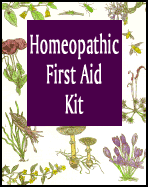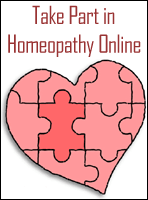Note: Homeopathic Treatment requires strict individualization. Please do not take any medicine without consulting your physician/homeopath.
The word "arthritis" literally means joint
inflammation ("arthr-" means joint; "-itis"
means inflammation). It refers to more than 100 different diseases.
These diseases usually affect the area in or around joints, such
as muscles and tendons. Some of these diseases can also affect other
parts of the body, including the skin and internal organs. Arthritis
usually causes stiffness, pain and fatigue. The most common diseases
mong arthritis are osteoarthritis, rheumatoid arthritis, and gout
and increasingly, fibromyalgia.
Many types of arthritis show signs of joint inflammation: swelling,
stiffness, tenderness, redness or warmth. These joint symptoms may
be accompanied by weight loss, fever or weakness.
When these symptoms last for more than two weeks, inflammatory
arthritis, such as rheumatoid arthritis may be the cause. Joint
inflammation may also be caused by infection, which can lead to
septic arthritis. Degenerative joint disease
(osteoarthritis) is the most common type of arthritis; joint
inflammation is not a prominent feature of this condition.
#Colchicum [Colch]
This is the great old school remedy for gout; every case gets it
in some form; and, strange to say, in the homoeopathic school it
is one of the first remedies thought of, but not every case of arthritic
trouble receives Colchicum from the careful homoeopathic prescriber.
The typical case calling for Colchicum is where the swelling is
red or pale, with extreme tenderness to touch, a tendency to shift
about from joint to joint, and pains which are worse on the slightest
motion. If the general symptoms of great prostration of the muscular
system and abdominal bloating be present Colchicum is the remedy.
Gastric symptoms and cardiac complications also characterize. It
is more indicated when the smaller joints, fingers, toes, wrists
and ankles are affected; the pains are very violent, patient cannot
bear to have the parts touched or to have anyone come near him.
Arnica has this fear that the part my be hit by anyone passing;
it has also arthritic pains in the foot, worse towards evening;
and a red big toe joint which feels as though it has been sprained,
so Arnica may be indicated well in gout. The Colchicum patient is
apt to be exceedingly irritable and the gout is not apt to decrease
this irritability. Unless Colchicum be given according to these
indications it will do no permanent good. The habit of giving Colchicum
to every case of gout in order to palliate the trouble may cause
it to attack the heart or fly to other parts. Indeed in potency
it is Homoeopathic to gout, with metastasis to the heart. Aconite
is most useful in acute attacks of gout in the joints of the feet.
It corresponds only to the onset and if continued for a day or two
will cure many cases.
#Ledum [Led]
Ledum is a useful remedy in gout as well as in many articular troubles.
We have the symptoms that the ball of the great toe is swollen,
sore and painful on stepping, drawing pains worse from warmth, pressure
and from motion. It has also gouty nodosities in the joints, it
differs from Bryonia in having a scanty instead of a profuse effusion;
it is, perhaps, better adapted to hot swelling of the hip joint
than is Bryonia. All the pains of Ledum travel upwards. Ledum is
also useful after abuse of Colchicum. It may be the first remedy
to use when the patient comes from allopathic hands, having been
dosed with large doses of Colchicum, which is a very asthenic remedy,
producing great muscular weakness, as we have seen. Ledum, it must
be remembered is a cold remedy, and attending all the symptoms is
a general chilliness and lack of animal heat. Another drug having
gouty nodosities in the joints is Guaiacum. This remedy has tearing
pains in the extremities and contractions ;of the muscles. It is
also especially useful for gouty inflammation affecting the knee
joint.
#Ammonium phosphoricum [Am-p]
This is a useful remedy in constitutional gout where there are nodosities
in the joints. It is not so much a remedy for the acute symptoms,
but for chronic cases where there are deposits of urate of soda
concretions in the joints and the hands become twisted out of shape.
Antimonium crudum has gouty nodes in the joints, but it is easily
selected from its gastric symptoms. Urinary symptoms, strong urine,
etc., would suggest Benzoic acid, and much red Lycopodium, both
;of which may be found useful in gout. Staphisagria has a similar
application to gout when it becomes systematized, as has also Ammonium
phosphoricum. Rhododendron has enlargements of the joints not due
to gouty deposits, worse during rest and on approach of a storm.
Urtica urens. This remedy is said to cure more cases of gout than
any other. Under its use pain and swelling subside and large quantities
of sand are passed. Picric acid. Halbert mentions this remedy as
useful in arthritis deformans, and thinks that treating the disease
from the homoeopathic standpoint will yield best results. |


